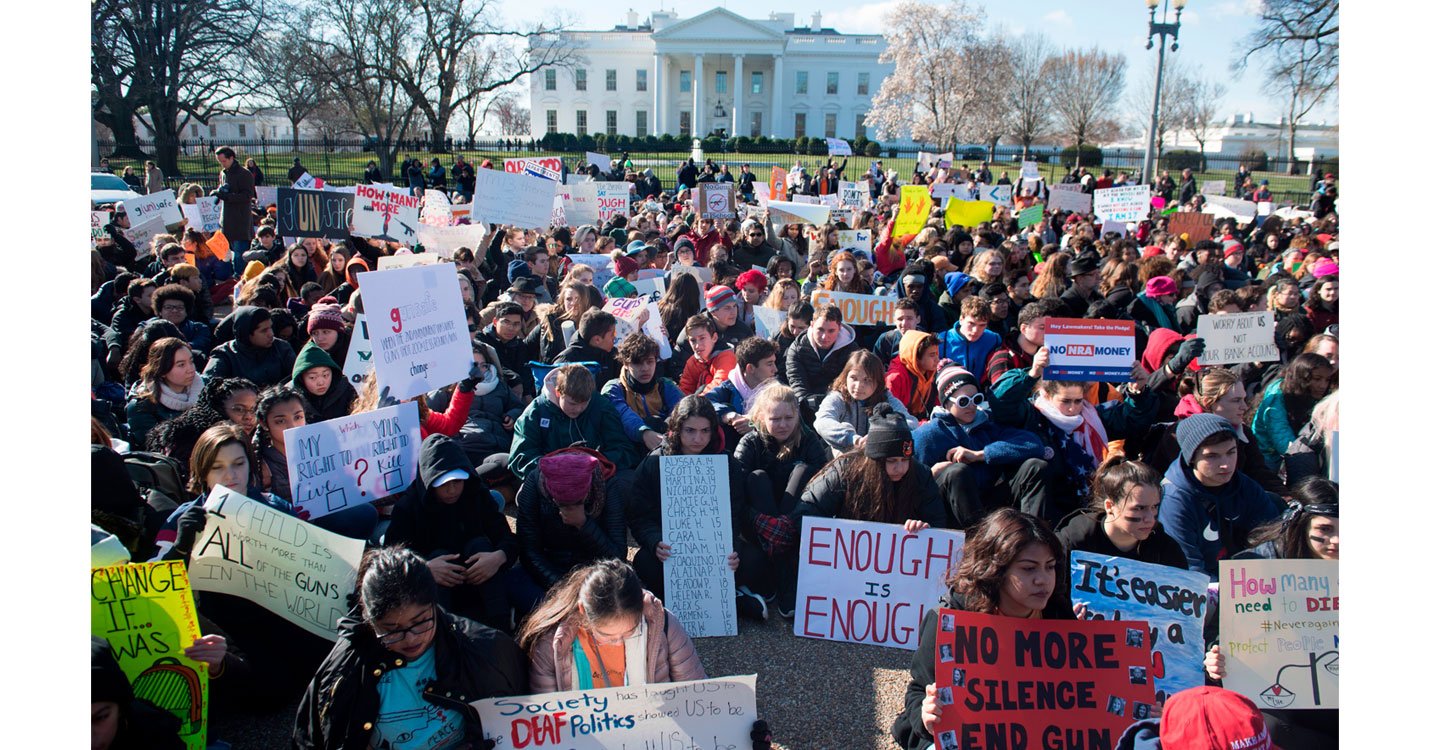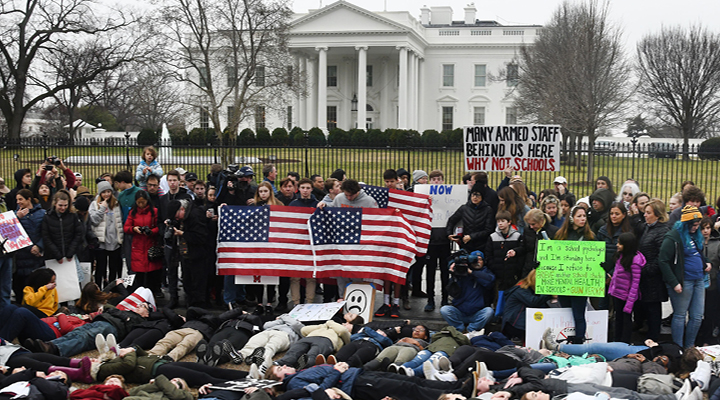Tens of thousands of students, inspired by a growing protest movement over gun violence, stood up in their classrooms on Wednesday and walked out of their schools. They joined a nationwide demonstration one month after a gunman killed 17 people at Marjory Stoneman Douglas High School in Parkland, Florida.
The protests—which lasted 17 minutes, one minute for each of the Parkland victims—were intended to pressure Congress to approve gun control legislation in the aftermath of the Florida school shooting. The school walkouts are taking place 10 days before a march on Washington, D.C.—planned for March 24—to continue pressing lawmakers for action on guns and school safety.
Just hours after the walkouts began, Nikolas Cruz, the 19-year-old accused of carrying out the shooting at Stoneman Douglas, was scheduled to appear in a Florida courtroom. Prosecutors said Tuesday they intend to seek the death penalty against Cruz.








